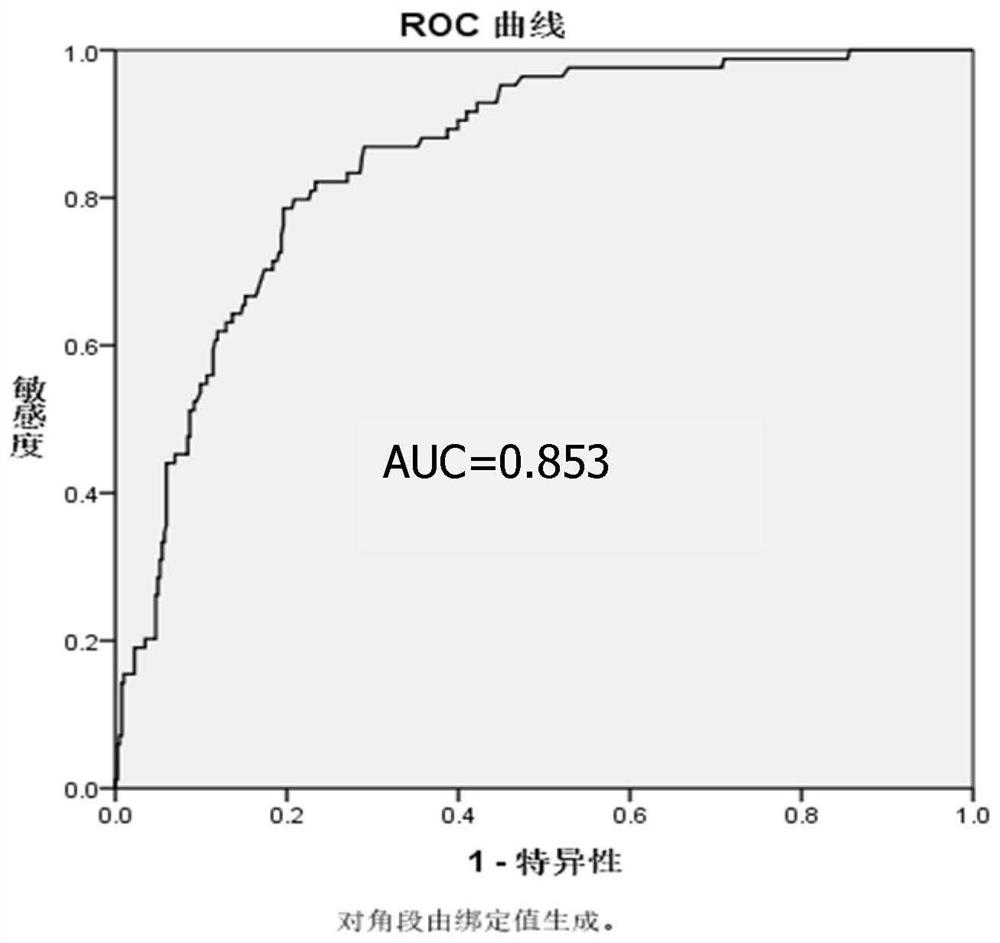Intestinal cancer detection reagent and application thereof in intestinal cancer detection
A technology for detecting reagents and reagents, applied in the field of biomedicine, can solve the problems of low repeatability, complicated equipment operation, and small injection volume, etc., and achieve the effects of high specificity, accuracy, good stability and high repeatability
- Summary
- Abstract
- Description
- Claims
- Application Information
AI Technical Summary
Problems solved by technology
Method used
Image
Examples
Embodiment 1
[0052] Example 1 Detection of intestinal cancer
[0053] Statistical analysis was carried out by measuring the G-Test specific fingerprint of serum glycoprotein oligosaccharide chains, and the materials and methods used:
[0054] 1. Test samples: Serum from colorectal cancer patients and normal controls.
[0055] 2. Experimental equipment: sugar group analyzer, PCR, centrifuge.
[0056] 3. Reagent preparation:
[0057] Reagent A: prepared by adding SDS with a mass concentration of 0.5 to 5% in ammonium bicarbonate solution with a concentration of 10 mM;
[0058] Reagent B: It is prepared by mixing 0.01~10U / 10μL glucosamidase and 0.01~10U / 10μL sialidase, and the pH value of the mixed solution is 4~9;
[0059] Reagent C: Prepared by dissolving 8-aminopyrene-1,3,6-trisulfonic acid in DMSO, the concentration is 0.01mM~1M;
[0060] Reagent D: stop solution.
[0061] The preparation method of the intestinal cancer detection reagent comprises the following steps:
[0062] Step ...
PUM
 Login to View More
Login to View More Abstract
Description
Claims
Application Information
 Login to View More
Login to View More - R&D Engineer
- R&D Manager
- IP Professional
- Industry Leading Data Capabilities
- Powerful AI technology
- Patent DNA Extraction
Browse by: Latest US Patents, China's latest patents, Technical Efficacy Thesaurus, Application Domain, Technology Topic, Popular Technical Reports.
© 2024 PatSnap. All rights reserved.Legal|Privacy policy|Modern Slavery Act Transparency Statement|Sitemap|About US| Contact US: help@patsnap.com









